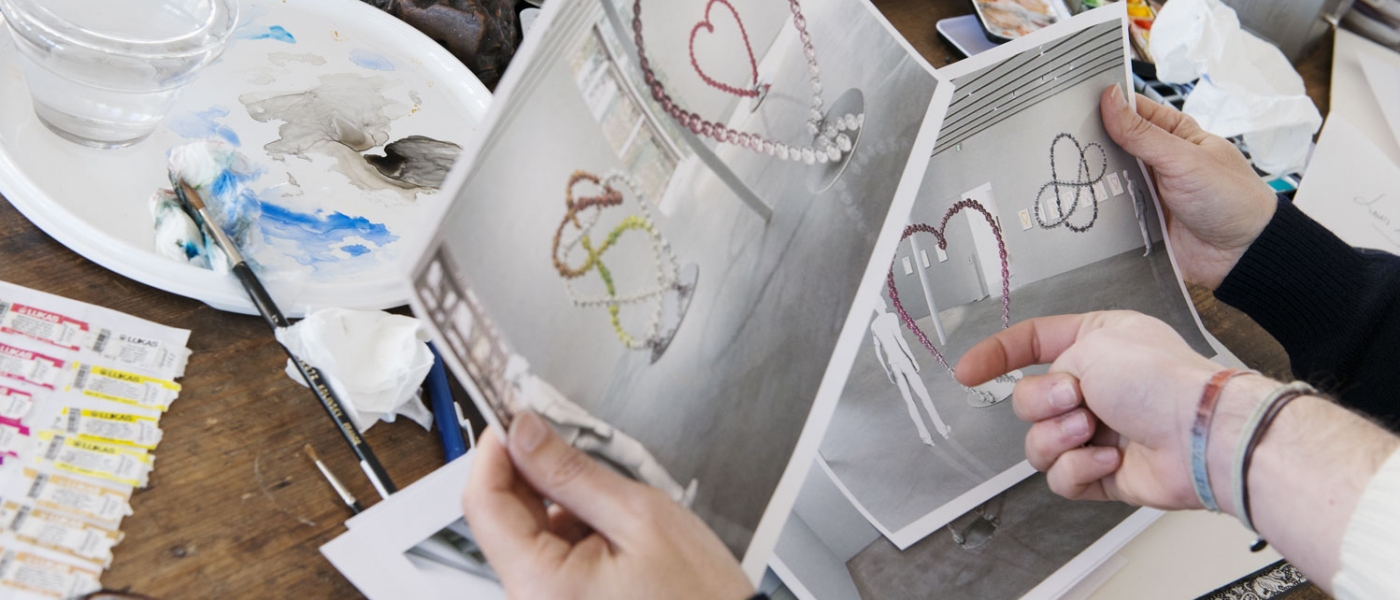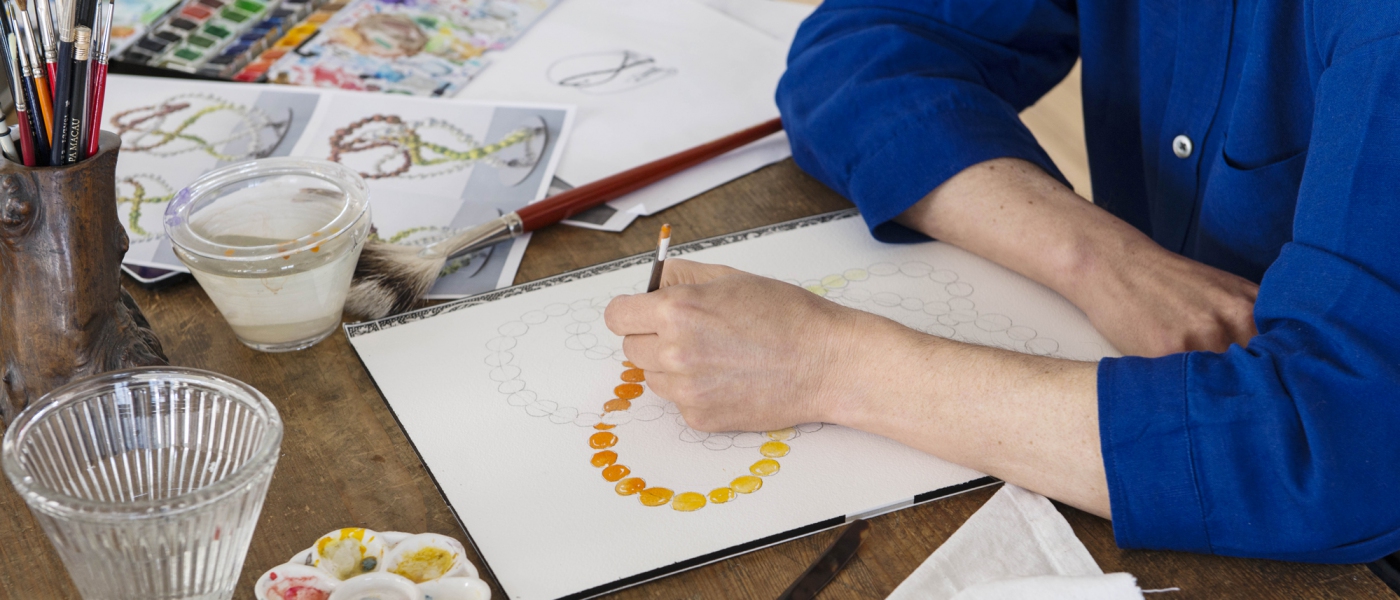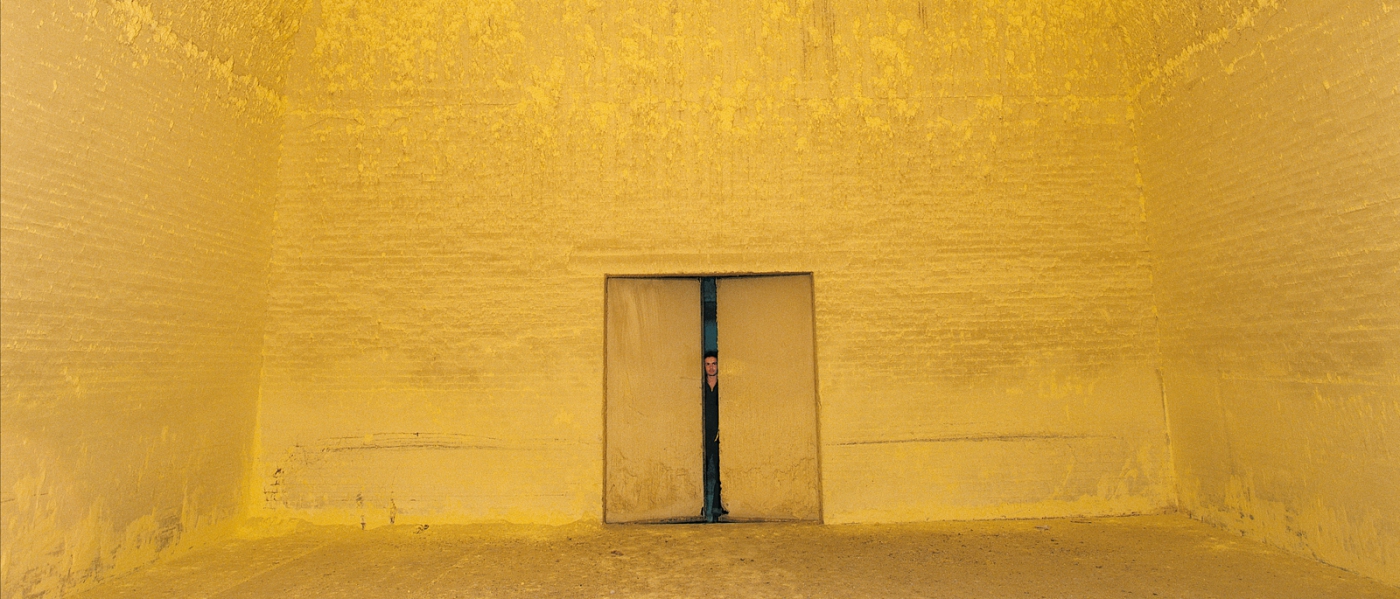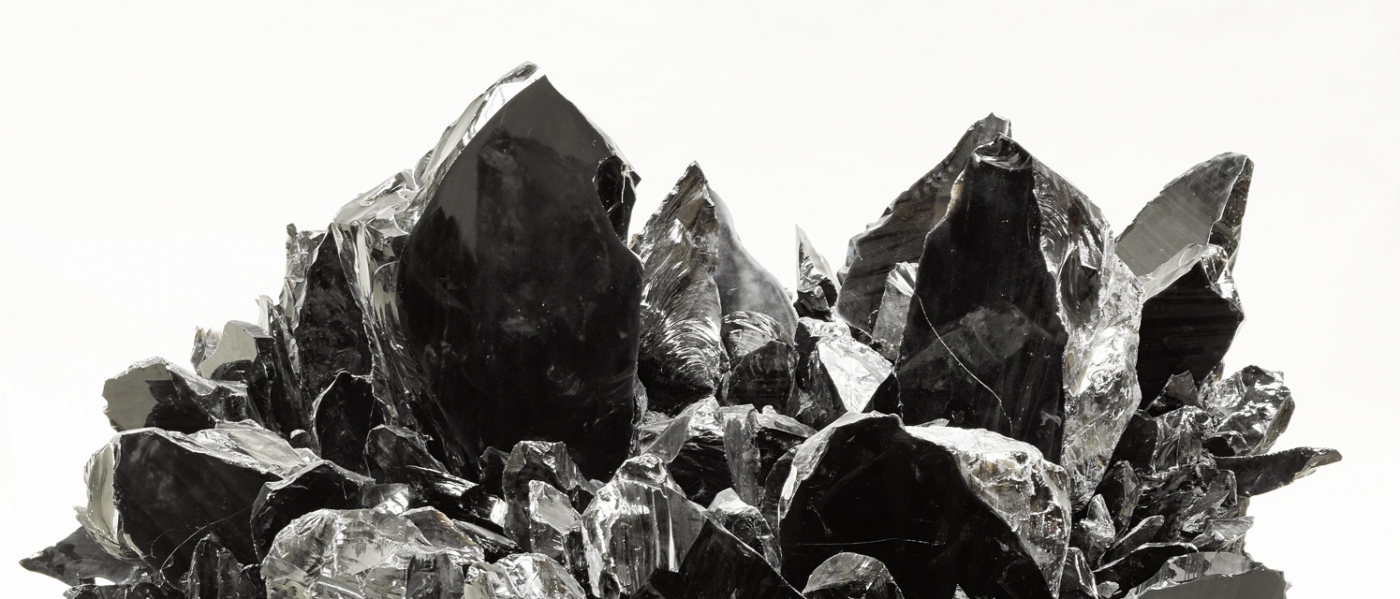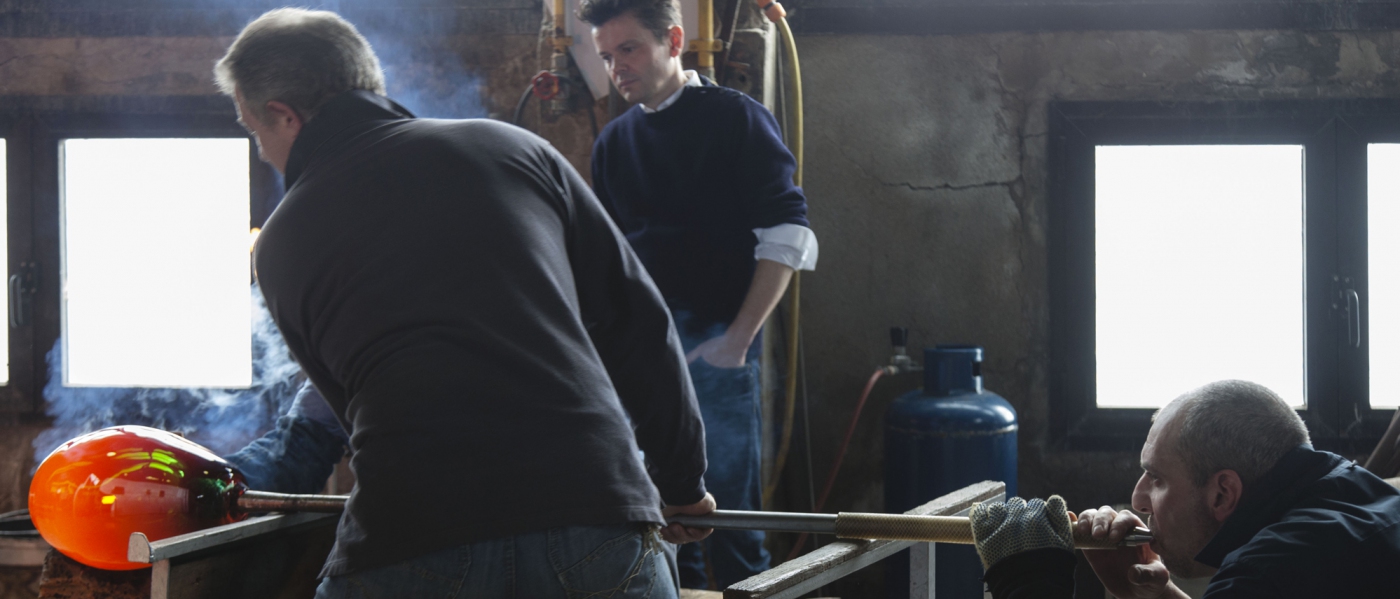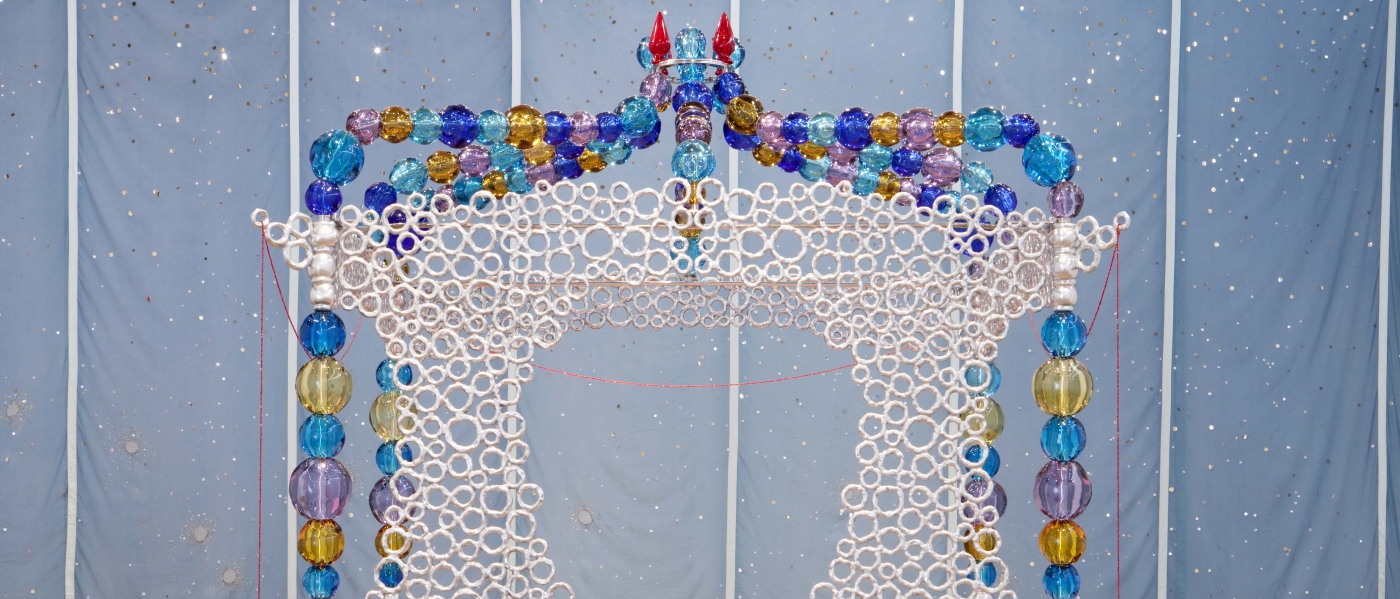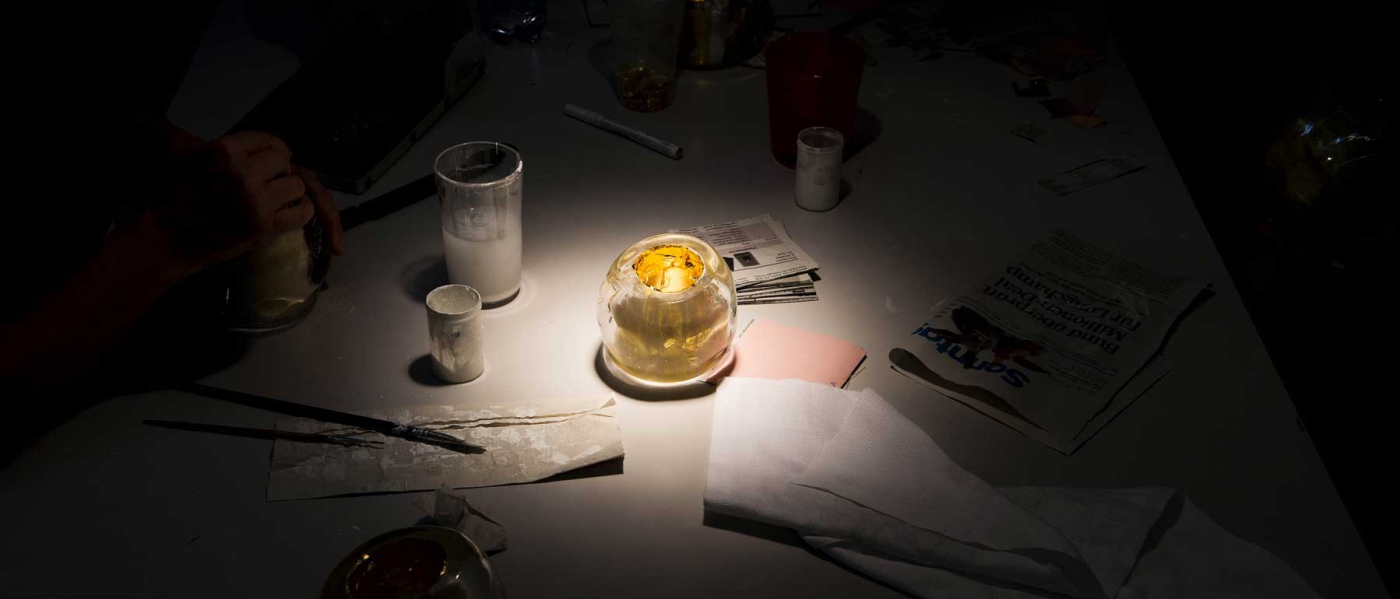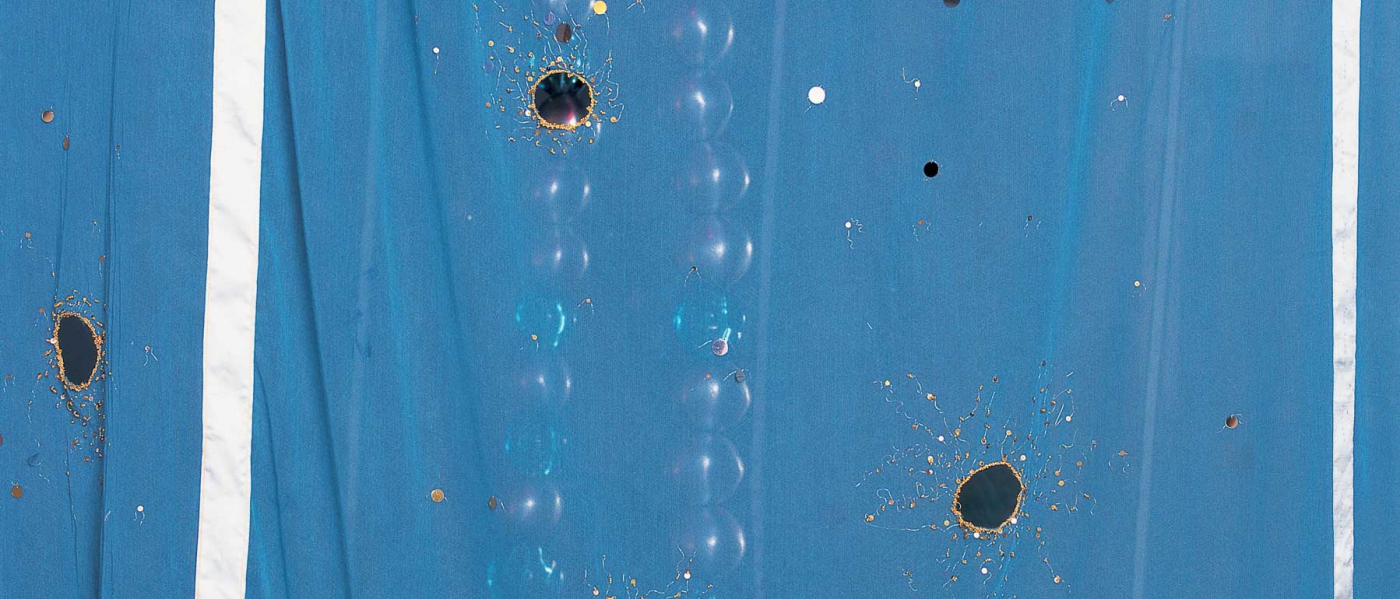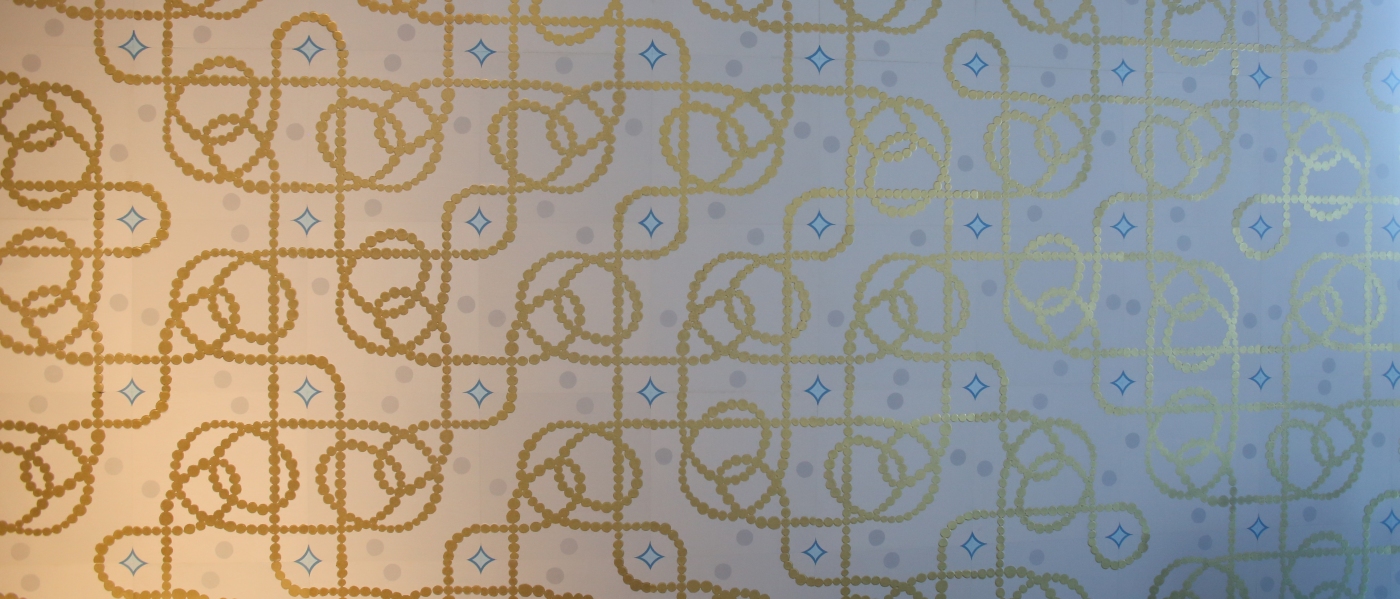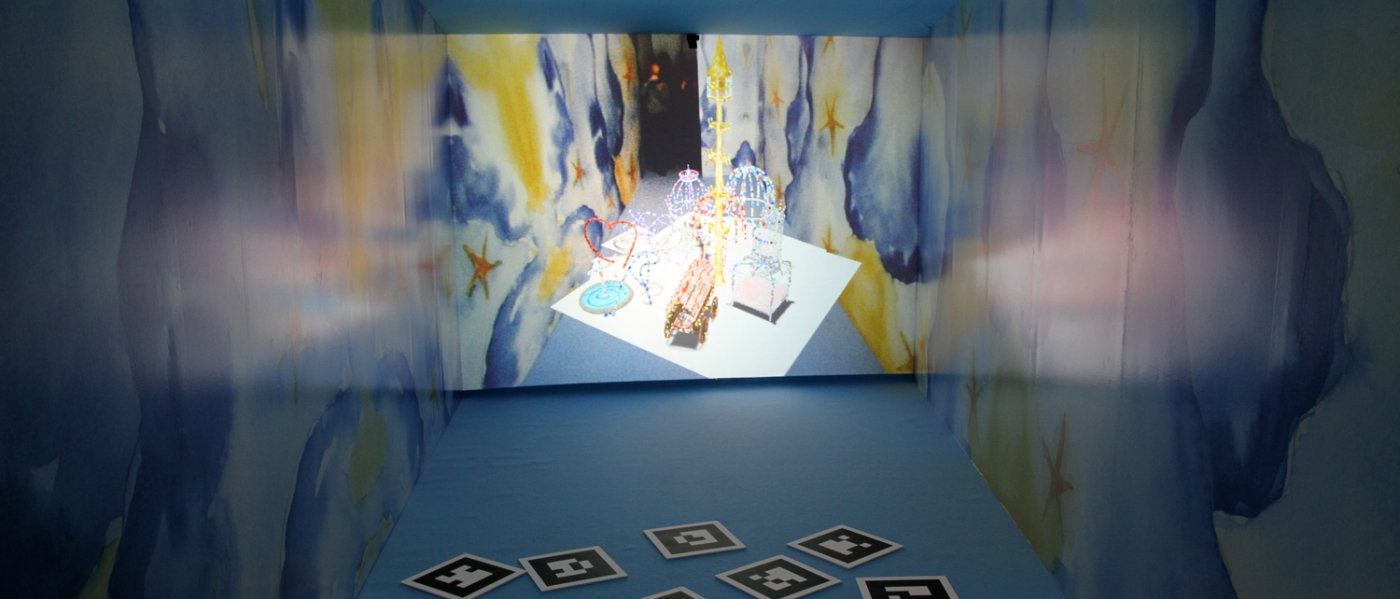The Othoniel Studio
Jean-Michel Othoniel's activity brings together exhibitions in major contemporary art museums around the world, shows in galleries and at international art fairs, and site-specific commissions, both public and private. With the support of the efficient Othoniel Studio team, the artist carefully monitors each step in the creation of his works, no matter how complex or monumental.
Using his watercolours and sketches as a guide, his technical directors create each component of his works, producing each element, managing relationships with contractors and following each step in the creative process. Set up as an agency, Othoniel Studio is equipped to meet the art-world's demands. Managers handle correspondence with museums, organize shipping and play a key role in mounting exhibitions the world over. Extensive archives are also prepared and managed, with each artwork is carefully documented. The ten-person team also systematically handles contracts and prepare dossiers for public commissions.
Located in la Solfatara at Montreuil's gates, the studio is not only a place of artistic creation but a meeting place for art-world colleagues and collaborators.
Jean-Michel Othoniel’s studio is multifaceted, each step of a particular project comes to fruition, from the watercolour sketches the artist makes each morning before the team arrives, to modeling and three-dimensional plans. The artworks themselves are produced in various production studios, from elements in iron and metalwork to blown glass. Jean-Michel Othoniel’s studio is also a transportable creative venue; the artist travels frequently, searching for new ideas to nourish his imagination.
Exploring materials
Fascinated by the reversibility of wax and sulfur, contemplating the symbolism of obsidian, exploring transparent shades of blown glass, considering the glittering surface of polished steel, Jean-Michel Othoniel has put experimentating with various materials at the centre of his art. For nearly fifteen years, he has surrounded himself with outstanding craftsmen who accompany him in exploring the possibilities of new and different mediums, inspiring in turn new encounters and new ideas.
Sulfur
Guided by his love for the music of language, Jean-Michel Othoniel began using sulfur in sculptures that played upon the relationship of words with similar sounds: sulfur/suffer/suffering/sickly/sulphurous… Othoniel discovered this metalloid in the late 1980s, while doing research on photosensitive materials. He was fascinated both by its powerful symbolic aspect and by its capacity for transformation (a quality he found again several years later in glass, which is both liquid and solid). His hollowed-out sculptures were presented in display cases with tilted mirrors that revealed their hidden secrets.
Obsidian
In 1989, during a trip to the Aeolian Islands to look for sulfur in Stromboli, Jean-Michel Othoniel visited Lipari. There, he discovered obsidian, a precious black volcanic glass produced when lava cools rapidly. He approached the CIRVA workshop in Marseille and asked them to artificially recreate this beautiful material. More than two years of research were necessary to reproduce a volcanic eruption in the lab in order to succeed. During that time, Othoniel was also studying glassblowing techniques, which inspired many ideas about how to use the material in his works.
In 2014, Jean-Michel Othoniel used the black, opaque glass for his commission Le Cœur d’Obsidienne (The Obsidian Heart). For the work, obsidian blocks extracted from Armenia were treated by the artist’s glassmakers and carved into a series of precious crystals.
Glass
Experimentation with diverse techniques is the cornerstone of Jean-Michel Othoniel's wor, but none more so than blown glass, which he has been using since 1993. His work in blown glass led to new developments that have allowed him to create monumental sculptures in infinite variations. He has worked with the master glassmaker Oscar Zanetti in Murano, as well as with the CIRVA glassblowing workshop in Marseille. There, he met the young glassblower Matteo Gonet, with whom he works today in his studio near Basel, Switzerland. Travelling the world, discovering numerous glassmaking traditions, Jean-Michel Othoniel has collaborated with artisans in Venice and with glassmakers from Monterrey to Mexico, from Sapporo to Japan, from Firozabad in India…. For more than twenty years, Othoniel has closely collaborated with masters of flame who accompany him in his daring experiments with form and colour, reinventing the craft of glassblowing in each new project.
Metal
Jean-Michel Othoniel’s knots, interlacing shapes and serpentine necklaces can be seen as self-portraits. Their magic owes much to the ironwork beneath, which gives them a soul and a structure. With the assistance of expert metalworkers and their precise workmanship, he translates computer-generated drawings, made by the Othoniel Studio's technical directors, into matter. The metal support beneath the glass beads is particularly visible in such sculptures as Mon Lit (My Bed) (2003) and Le Confident (The Confidant) (2007), his public commission for the city of Nice.
Gold
Jean-Michel Othoniel used gold leaf for the first time in 1999 during a trip to Japan, when he produced a monumental necklace with artisans from Sapporo. Several years later, back in Japan, he rediscovered this material for a work commissioned in 2013 by the Mori Art Museum: Kin no Kokoro. A gilded bronze heart mounted on the reflecting water’s surface in a Japanese garden, this work reflects the spiritual and sacred dimension of gold in Japanese culture.
In Othoniel's fountain sculptures in Versailles, Les Belles Danses (The Beautiful Dances), the artist chose to pair blown glass with gold leaf, in keeping with the materials used by Le Nôtre, white marble and gilded bronze. In the Water Theatre Grove, gold, the symbol of the sun and perfection, evokes the splendour of the Court, as well as the aura of the Sun King.
Embroidery
From the lightness of watercolour to the delicacy of needlework, Jean-Michel Othoniel has frequently invited embroiderers to translate his drawings. He collaborated with young embroiderers from Rochefort – who are keeping alive the artisanal tradition of working with gold thread, once used for military decorations – to scatter 'glory holes' on azure blue voile for his exhibition “Crystal Palace” at the Cartier Foundation.
Othoniel also ambitions to revitalize and reinvent traditional savoir faire, and has brought a new dimension to Touraine lace needlework, which he transforms with colour and silk voile. He has also experimented with felt, and collaborated with the Felt Museum in Mouzon to create a special eiderdown quilt with embroidered buttons and decorations.
Explorations
Commissions frequently offer Jean-Michel Othoniel the opportunity to explore new uses for traditional techniques that have been preciously preserved and passed on, as he did with the master fountain-makers and hydraulic engineers in the Versailles gardens, who produced elements of Othoniel's Water Theatre grove sculptures from his drawings, which were inspired by Le Nôtre's.
In his project for the Angoulême cathedral, he worked with artisans who master the traditional techniques of making embossed wallpaper or decorated cement tiles, both perpetuating tradiitional techniques and inventing new ones.
Virtual stories
Jean-Michel Othoniel’s artworks have frequently led him to combine different mediums in his work, including experimenting with technology. After producing a CD-Rom in 1999, A Shadow in Your Window, a thematic and labyrinthine exploration of his artistic practice, Jean-Michel Othoniel took on the world of augmented reality in 2011. During his retrospective “My Way,” he designed a programme enabling children to discover six of his sculptures in 3D. Entitled Le Réel merveilleux, this exhibition-workshop explores ideas of creativity, technology and dreams.
